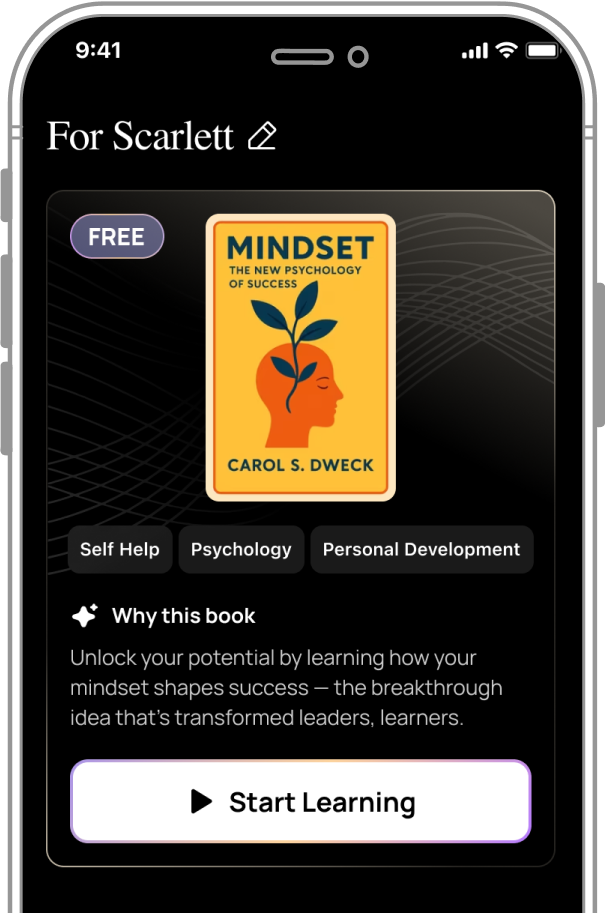What is
CEO Excellence by Carolyn Dewar about?
CEO Excellence outlines the six key mindsets and responsibilities that distinguish top-performing CEOs, based on 20 years of research on 7,800 global leaders. Co-authored by McKinsey senior partners, it combines insights from interviews with 65 elite CEOs like Satya Nadella and Mary Barra, offering actionable frameworks for leadership excellence in areas like strategy, culture, and crisis management.
Who should read
CEO Excellence?
Aspiring executives, current CEOs, and senior leaders across industries will benefit from its evidence-based strategies. The book also appeals to business students and professionals seeking to understand how top leaders drive organizational success through adaptive decision-making and stakeholder alignment.
Is
CEO Excellence worth reading?
Yes—it’s a New York Times bestseller praised for combining rigorous McKinsey research with real-world case studies. The book provides practical tools, including self-assessment guides, and is frequently cited in executive education programs for its focus on timeless leadership principles.
What are the six key responsibilities of exceptional CEOs?
The book identifies six core areas:
- Setting direction through bold vision
- Aligning organizational culture
- Mobilizing leadership teams
- Engaging boards effectively
- Connecting with stakeholders
- Managing personal time and energy
Top CEOs integrate these dynamically rather than excelling in isolation.
How do the best CEOs prioritize their responsibilities?
Elite leaders adapt their focus based on real-time organizational needs, balancing long-term strategy with emergent challenges like market shifts or crises. The book emphasizes context-specific prioritization over rigid formulas.
What research methodology does
CEO Excellence use?
McKinsey analyzed 20 years of data from 3,500 companies across 24 industries, identifying 200 top-performing CEOs through metrics like tenure, financial results, and corporate conduct. In-depth interviews with 65 leaders provided qualitative insights.
Which lesser-known CEOs are highlighted in the book?
Beyond household names like Jamie Dimon, the authors showcase leaders like Doug Baker (Ecolab) who exemplify the six mindsets through niche industry transformations and cultural overhauls.
What practical tools does
CEO Excellence provide?
The book includes assessment frameworks for leadership effectiveness, prioritization matrices for strategic decisions, and templates for stakeholder communication. An appendix offers tailored exercises for self-evaluation.
How does
CEO Excellence compare to
The CEO Next Door?
While both analyze CEO traits, Dewar’s work focuses on mindsets of proven top performers, whereas The CEO Next Door emphasizes behavioral patterns of emerging leaders. McKinsey’s research spans larger organizations and global contexts.
What criticisms exist about
CEO Excellence?
Some note the book targets large-company leaders rather than startups, and its principles require adaptation for different organizational scales. Critics argue it emphasizes mindset over tactical execution details.
Why is
CEO Excellence relevant in 2025’s business environment?
Its focus on adaptive leadership and stakeholder capitalism aligns with current challenges like AI disruption and hybrid work models. The mindsets help leaders navigate volatility through principles rather than prescriptive plans.
Does
CEO Excellence include actionable quotes from top CEOs?
Yes—notable insights include Satya Nadella’s “Learn-it-all beats know-it-all” cultural philosophy and Mary Barra’s approach to crisis communication. The book pairs quotes with interpretations for practical application.









